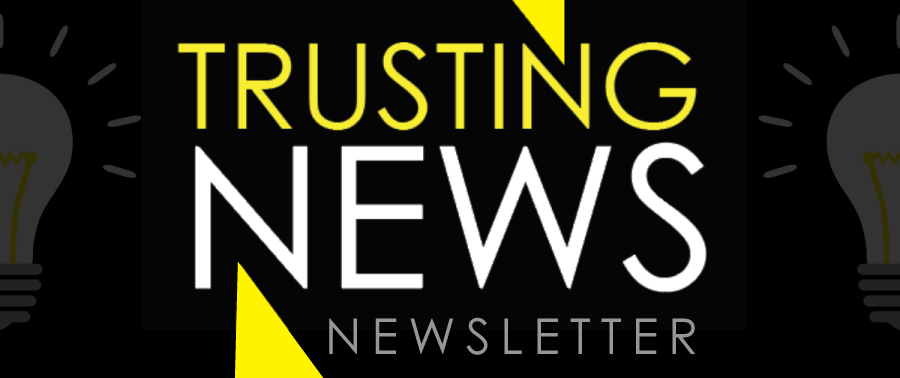
This weekly Trust Tips newsletter shares quick, actionable tips for how journalists can earn and sustain trust. Subscribe to get it in your inbox at trustingnews.org/newsletter.
Trust Tips 248: How to decide which stories to add transparency elements to
Hi there. Lynn here.
We know, thanks to research, that when newsrooms provide explanations and insight into the reporting process it can help people better understand your goals and motivations while also improving perceptions of your news organization.
For journalists, it can be tough to picture what transparency should look like — both on a brand level and in day-to-day coverage. It can also be hard to figure out which stories to add transparency elements to.
The first thing we tell newsrooms is you don’t have to add transparency elements to every story. You could, but that seems unrealistic and probably isn’t necessary. So, to make day-to-day transparency more realistic and doable, consider these questions.
Is the story covering a controversial topic?
If you have a story about a topic likely to create controversy, or if it’s a story you put extra care into, consider picking one (or more) of these questions to answer:
- Why we’re doing this story: explain how you decide what stories to cover, where the story idea came from, what questions you wanted to answer through the reporting
- How we’re doing this story: explain your sourcing, fact-checking, how many days/weeks/months you worked on the story, and ethical decisions made
- What else you should know about how we work: disclose any business relationships or conflicts of interest, talk about any public records requests
Was the story a talker?
Did people in the newsroom have a lot to say about the story when it was pitched? If so, that’s a good sign the story could probably benefit from some transparency around your decision-making and reporting process.
You could tell your audience the proposed story sparked considerable internal debate, what was discussed and what you chose to do. You could also explain other elements that might have come up like which sources to talk to, which data/facts to include, the impact of the story on the community, etc.
Transparency about these internal deliberations illuminates the decision-making process to audiences, showcasing the ethical decisions applied to the story. This transparency can also help the newsroom get on the record about the team’s commitment to reflecting audience interests, being fair, etc.
Did the story take a lot of time/resources?
For investigative pieces or stories demanding extensive resources, journalists should explain the dedication involved. Transparency here illuminates the depth of research, the complexity of the subject matter, and the commitment to uncovering facts. It showcases the rigor of journalistic efforts, reinforcing credibility and emphasizing the importance of the story to warrant such investment.
Most importantly though, it can provide clarity and explanation as to why so many resources were dedicated to this topic. People make a lot of assumptions about what gets covered, what doesn’t and how much (or how little) something or someone gets covered. So, when you spend a lot of time or resources covering something (or someone) explain the reasoning behind it.
Can you address user curiosity?
The goal with transparency elements is to answer users’ questions (or correct their misassumptions). So, when thinking about which story to add transparency elements to, think about what a user may be curious about or have questions about related to the story. Then address those in the story.
This can help satisfy the audience’s interests while also potentially filling an information void for someone that could have instead been filled with an assumption (normally negative).
In the example below, the Shawnee Mission Post explains why readers are seeing the news organization cover a topic it normally doesn’t.

How you write explanations matters
The language you use to explain your process and decision-making is important. Try to keep the following in mind:
- Avoid journalism jargon. Make sure explanations will make sense to non-journalists.
- Tie it to the community. You are fact-checking for them. You are making ethical considerations with them in mind. You’re working to earn their trust.
- Avoid defensiveness. It’s ok to explain your process and reasoning, and even defend your work, but you want to do so with humility.
- Validate skepticism. It’s reasonable for people to question your integrity or ethics. Not all information is produced responsibly. Your role is to explain your *own* work, not all journalism.
- Adopt a generous perspective. Picture your audience as open-minded individuals eager to understand and appreciate your work. Extend generosity by providing transparent and detailed reasons behind your narrative choices.
Remember, our writing not only informs but also builds bridges of understanding. By considering these points, we can create impactful, transparent, and engaging journalism that resonates with our audience.
For more tips on how to insert transparency into daily coverage and see more examples of how newsrooms are doing it, check out our Trust Kit on the topic. And while you’re at it, consider forwarding it to some colleagues who can be allies in the movement toward transparency!
Have any examples to share?
We’d love to see how your newsroom is working to build trust and demonstrate credibility! Feel free to share examples with us here, on LinkedIn, X or email at info@trustingnews.org.
Thanks for reading!
Lynn Walsh, Trusting News assistant director
December 12, 2023
At Trusting News, we learn how people decide what news to trust and turn that knowledge into actionable strategies for journalists. We train and empower journalists to take responsibility for demonstrating credibility and actively earning trust through transparency and engagement. Subscribe to our Trust Tips newsletter. Follow us on Twitter and Facebook. Read more about our work at TrustingNews.org.

Assistant director Lynn Walsh (she/her) is an Emmy award-winning journalist who has worked in investigative journalism at the national level and locally in California, Ohio, Texas and Florida. She is the former Ethics Chair for the Society of Professional Journalists and a past national president for the organization. Based in San Diego, Lynn is also an adjunct professor and freelance journalist. She can be reached at lynn@TrustingNews.org and on Twitter @lwalsh.

